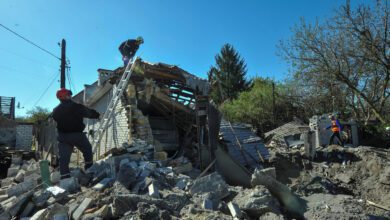Modern architectural marvel: How Taiwan’s tallest building survived a 7.4-magnitude earthquake
Following the worst earthquake to strike Taiwan in 25 years, the highest building in the world, Taipei 101, stood unharmed, demonstrating the ultimate resilience of contemporary engineering to natural calamities. Taiwan’s readiness and architectural durability were put to the test by the 7.4-magnitude earthquake, which destroyed 770 structures and left at least 9 people dead. Taipei, the capital, was especially badly damaged, given that it was just 80 miles from the epicentre.
The small wobble experienced by Taipei 101 during the earthquake is a characteristic of the building, not a fault.

The skyscraper’s capacity to bend in reaction to seismic activity while preserving stiffness against strong winds and typhoons is essential to its survival since it is mostly made of reinforced concrete. In earthquake-prone East Asia, traditional design is based on the idea of moving with seismic forces rather than against them, according to a CNN article.
Taipei 101’s tuned mass damper, a gigantic 660-ton golden steel sphere held by cables inside the skyscraper, plays a vital role in the building’s seismic resilience. This wonder of technology dissipates kinetic energy as heat by acting as a pendulum to offset the building’s swinging. According to a CNN story, these dampers are essential for shielding buildings throughout the globe from harmonic vibration, a potentially fatal movement amplification that may cause structural collapse during earthquakes.
More than just the tuned mass damper for stability is included in the design of Taipei 101 by Taiwanese company CY Lee & Partners. Its massive steel outrigger trusses link the core and perimeter mega-columns, which are joined by a foundation that is buried deep into the bedrock and is supported by reinforced concrete and steel piles. Following strict seismic-safety guidelines appropriate for its location on the “Pacific Ring of Fire,” Taipei 101 is a prime example of high-rise security and thoughtful design.
Even with extensive digital modelling and empirical testing—such as “shake table” tests—the actual performance of structures such as Taipei 101 in the event of a major earthquake is still entirely theoretical. According to the CNN story, the building’s ability to withstand Wednesday’s earthquake is a real-world example of engineering accomplishment.
Popular tourist destination Taipei 101’s observation deck provides a rare view of the tuned mass damper in operation, particularly during severe gusts, signifying not just architectural excellence but also an ongoing dedication to protecting lives from nature’s unpredictabilities.







